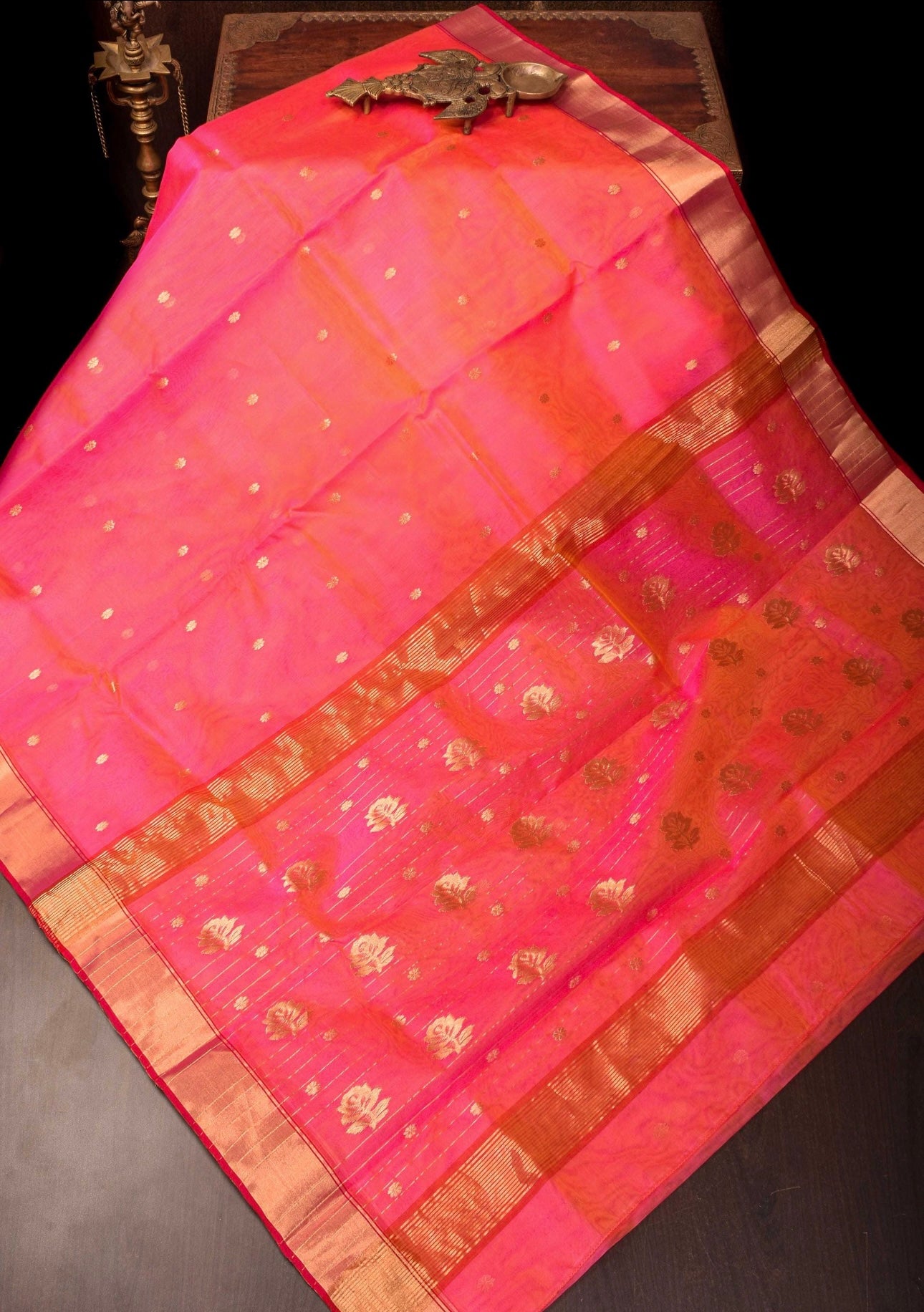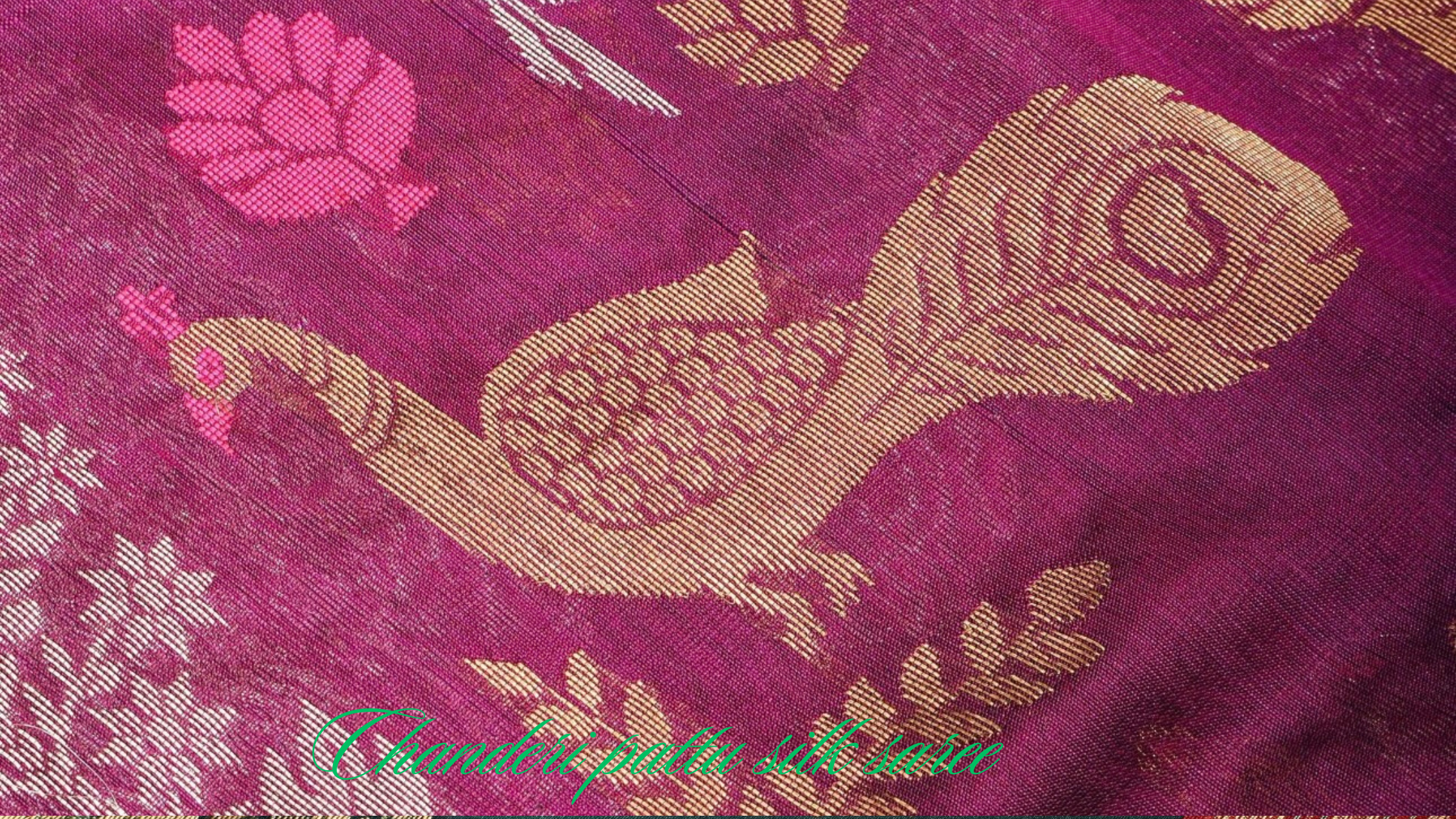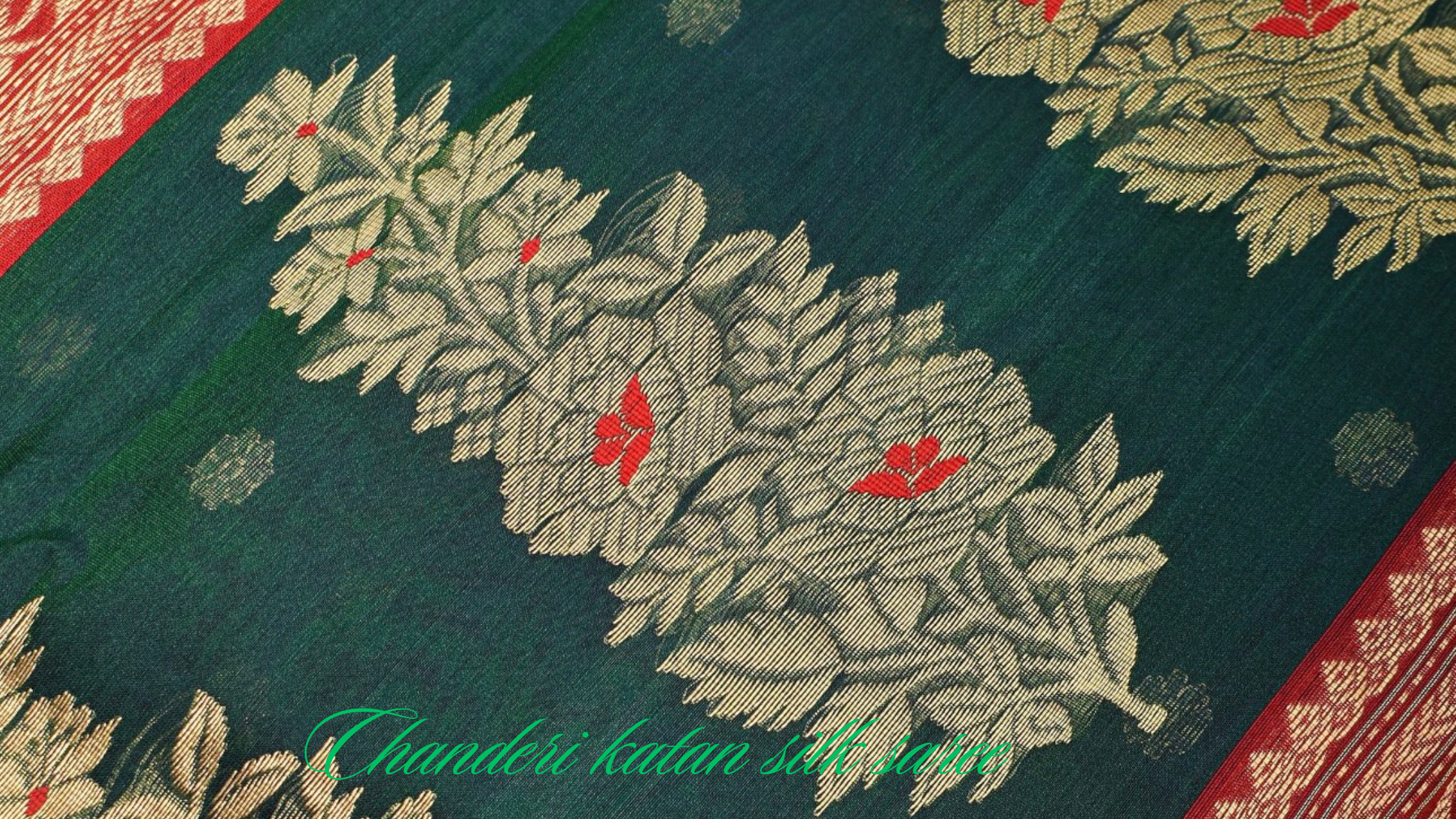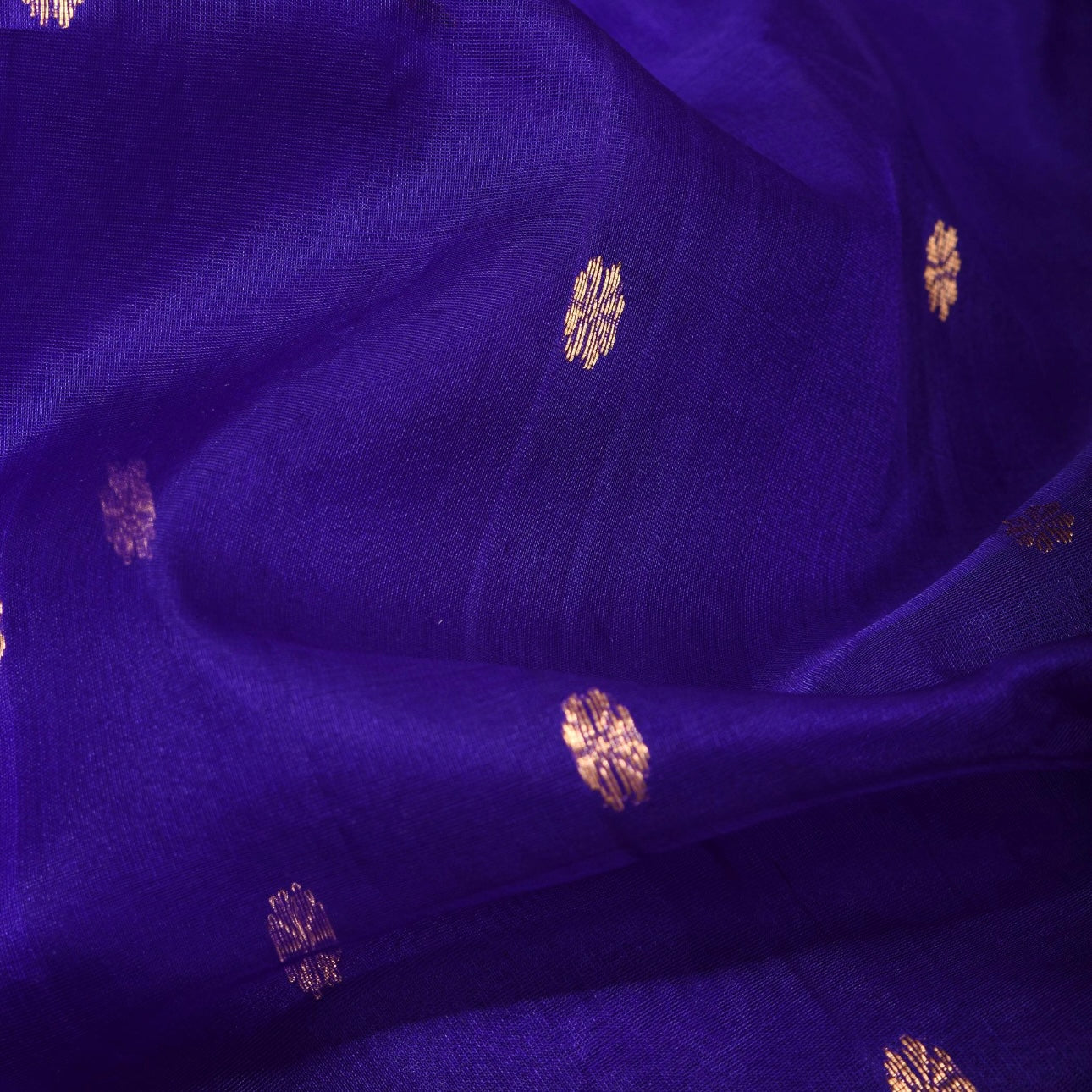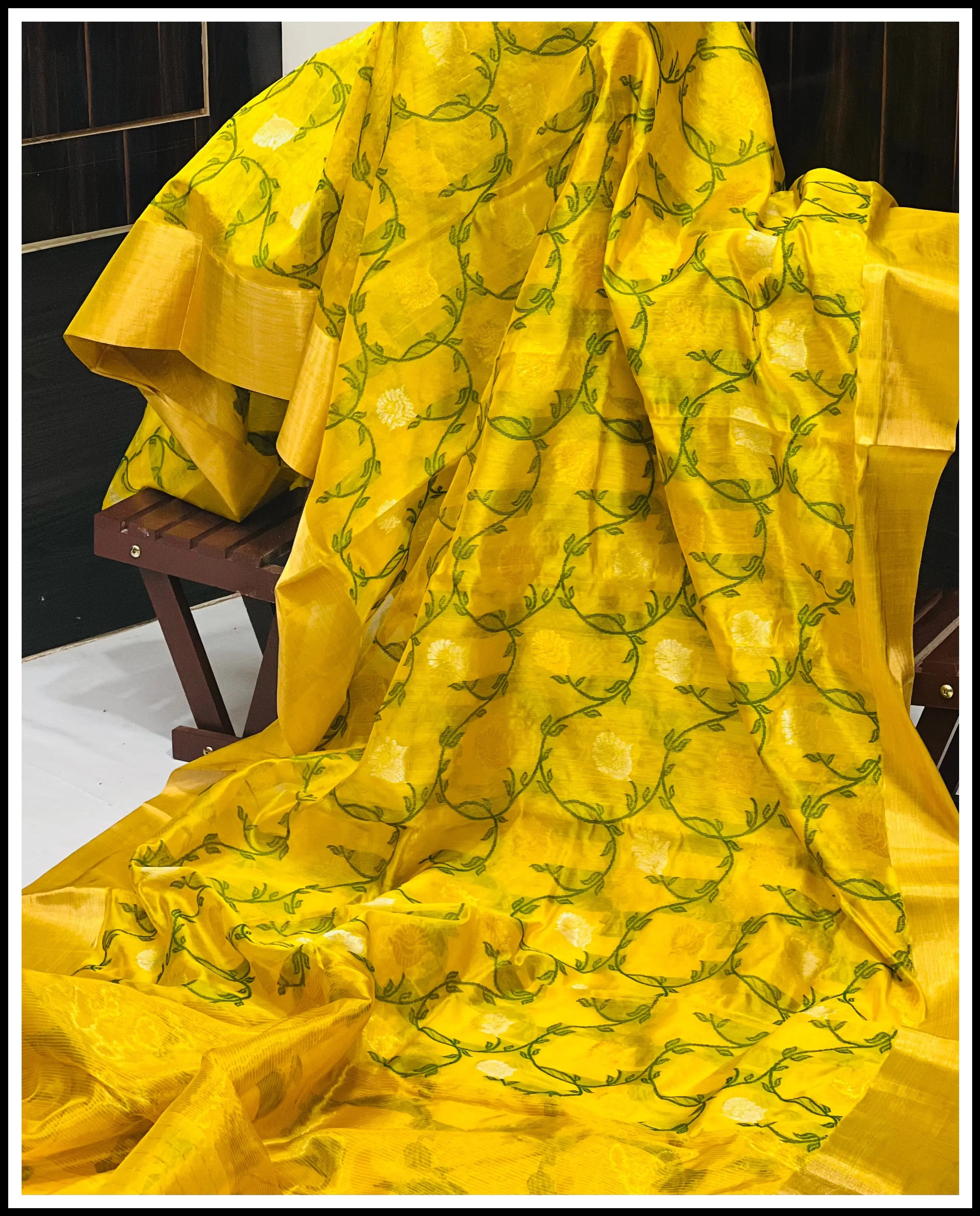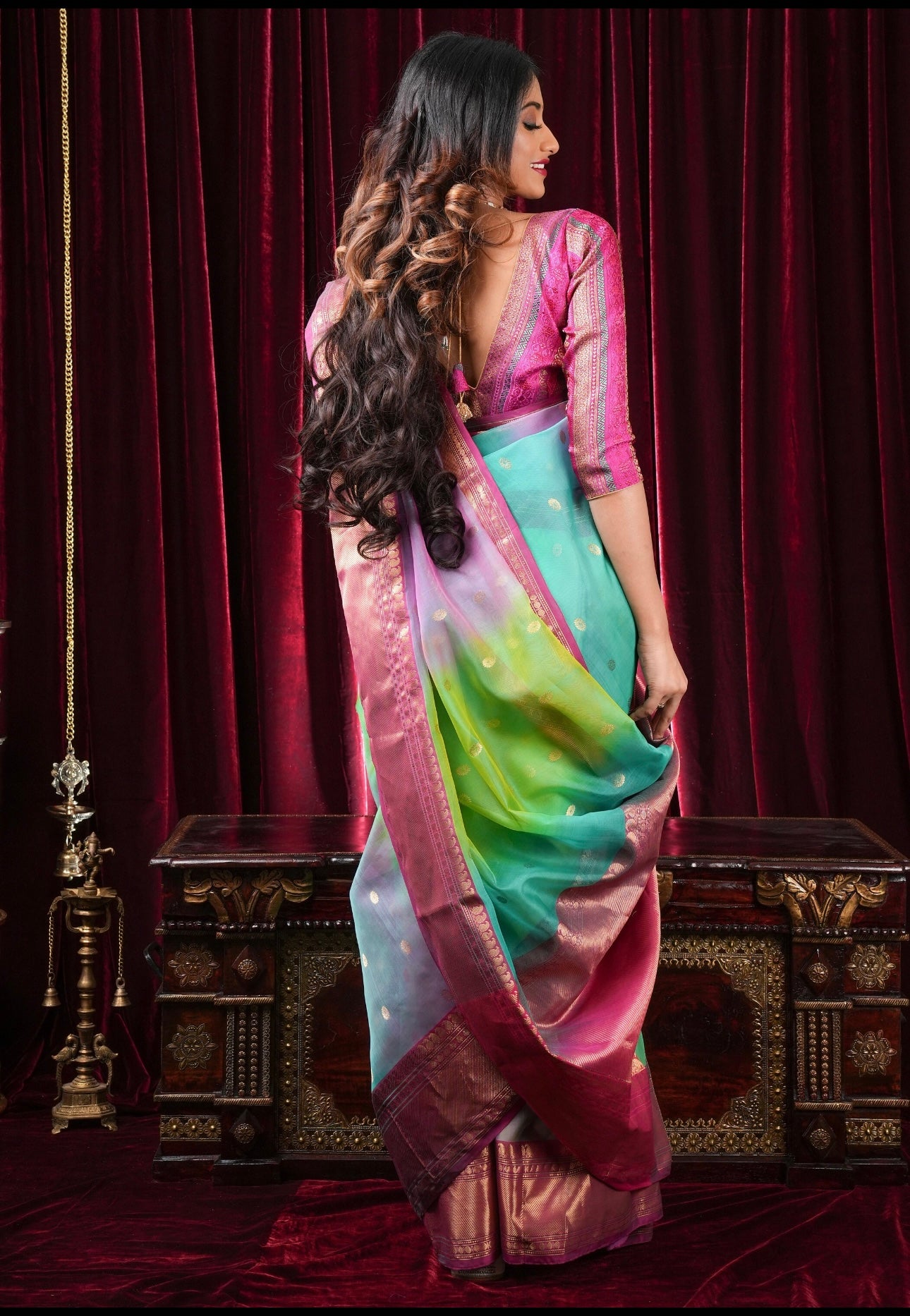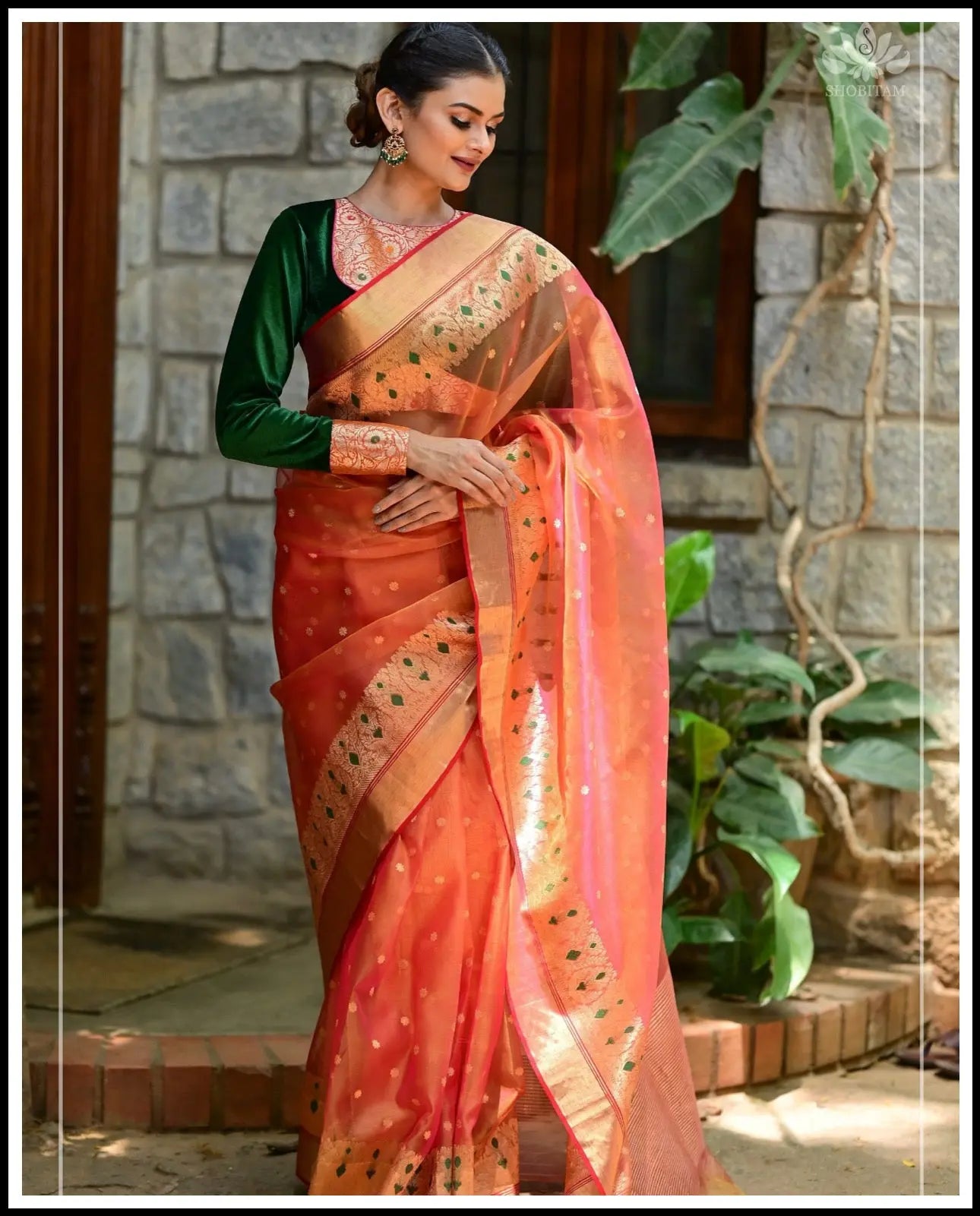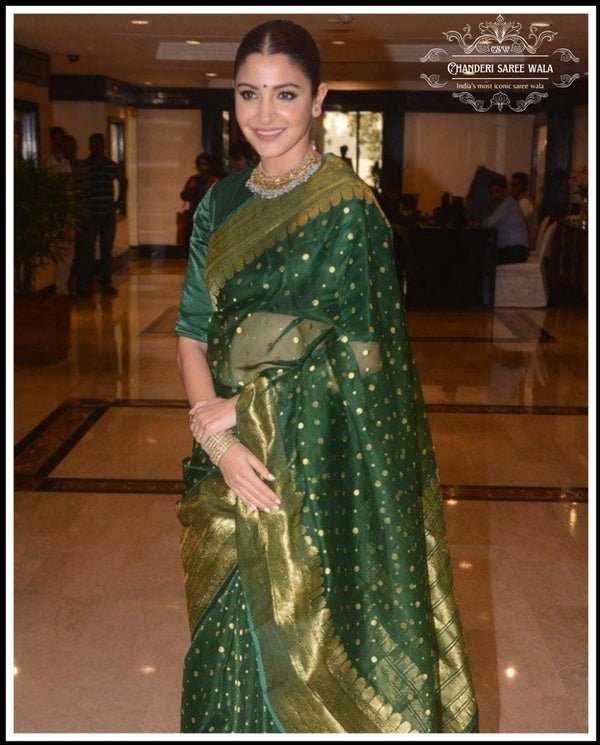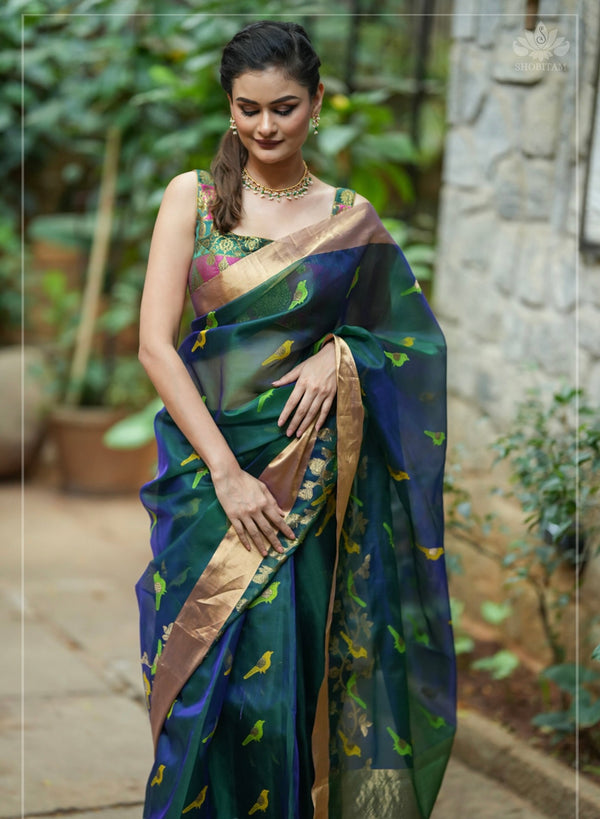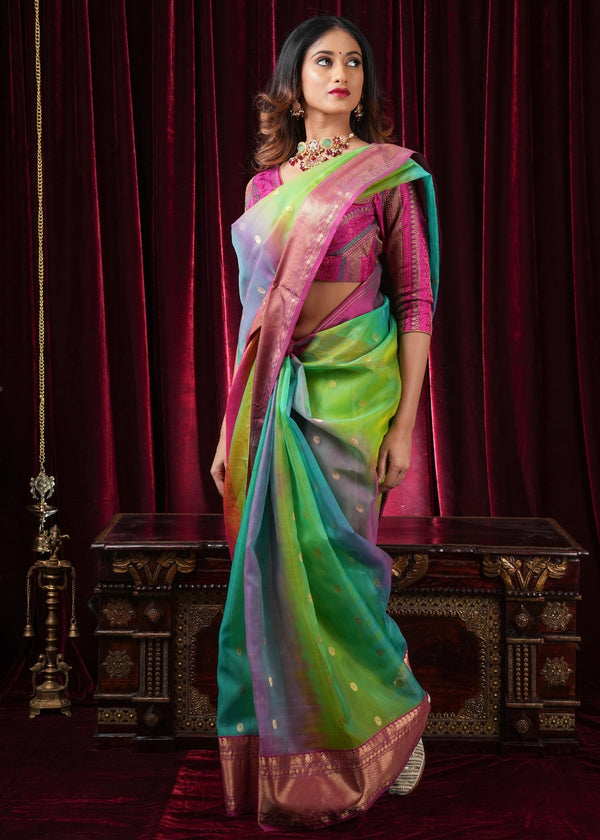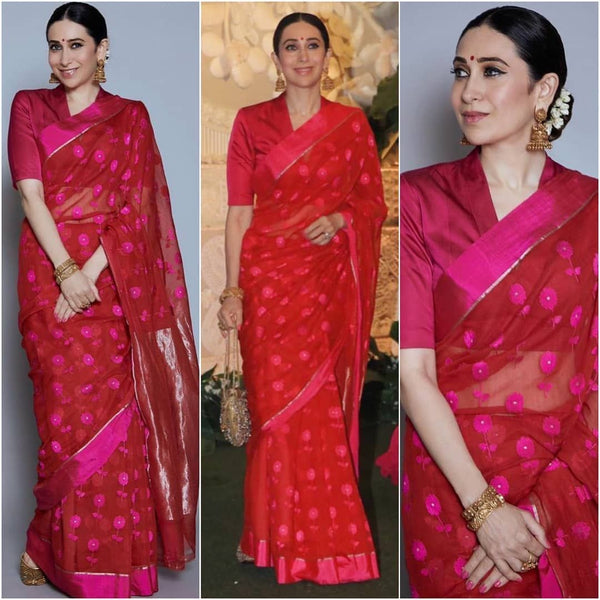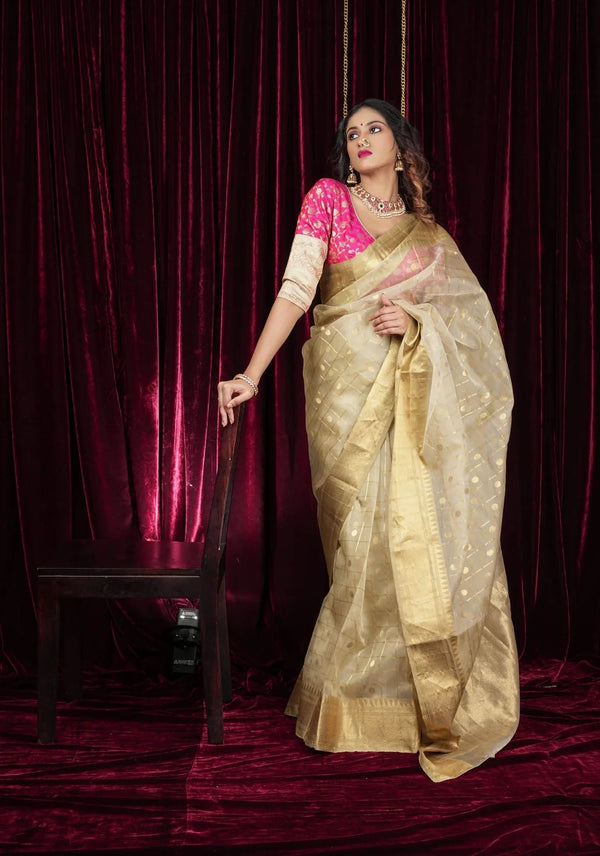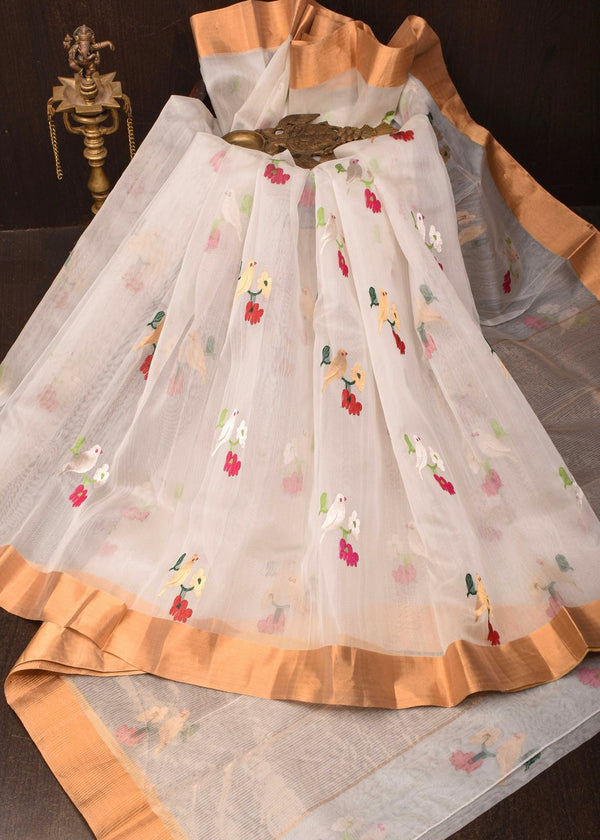
Features of Authentic Chanderi Silk Saree
-
Fabric Feel
-
Real Chanderi silk is lightweight, sheer, and glossy.
-
It feels soft yet crisp when draped.
-
Fake ones often feel too stiff or too synthetic.
-
-
Handloom Weaving Irregularities
-
Genuine handwoven Chanderi has tiny irregularities (not flaws, but signs of handcrafting).
-
Powerloom sarees look too uniform.
-
-
Buttis (Motifs)
-
Traditional Chanderi motifs: peacock, coin, lotus, floral vines (booti/bootas).
-
Authentic sarees have zari work woven into the fabric, not pasted or embroidered on top.
-
-
Zari Quality
-
Original Chanderi uses pure gold/silver-coated zari or tested zari that doesn’t fade easily.
-
In fakes, zari looks dull or peels off after a few washes.
-
-
Transparency
-
A signature test: hold the saree against light → authentic Chanderi silk looks slightly transparent but not flimsy.
-
-
GI Tag & Source
-
Authentic Chanderi sarees carry a Geographical Indication (GI) tag of Chanderi, Madhya Pradesh.
-
Buying directly from registered weavers or reputed handloom outlets (like Govt. emporiums, Weaver societies, Chanderi town markets) ensures authenticity.
-
-
Price Point
-
Genuine Chanderi silk sarees are not cheap. Pure silk starts around ₹6,000–₹15,000 and can go much higher depending on zari and design.
-
If offered at ₹1,500–₹2,000 as “pure Chanderi silk” – it’s most likely fake or a cotton/poly mix.
-

